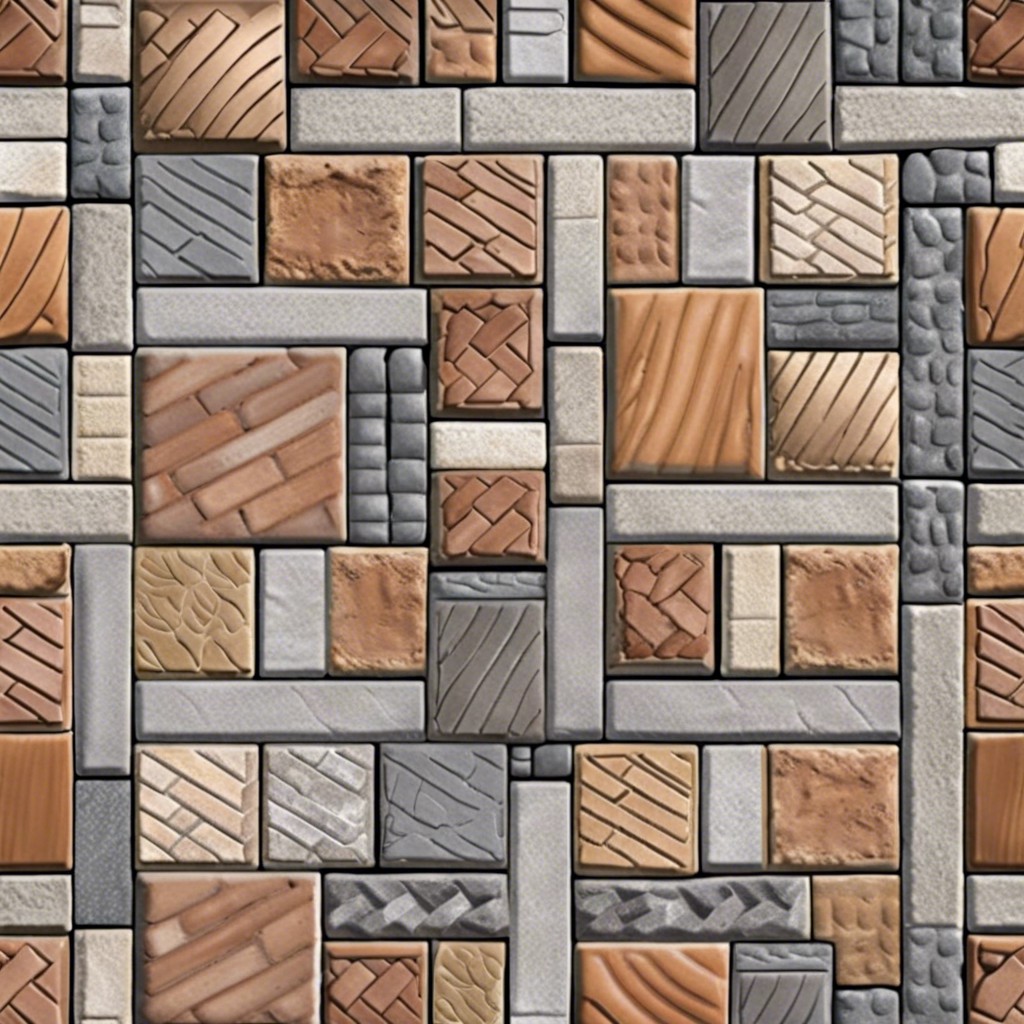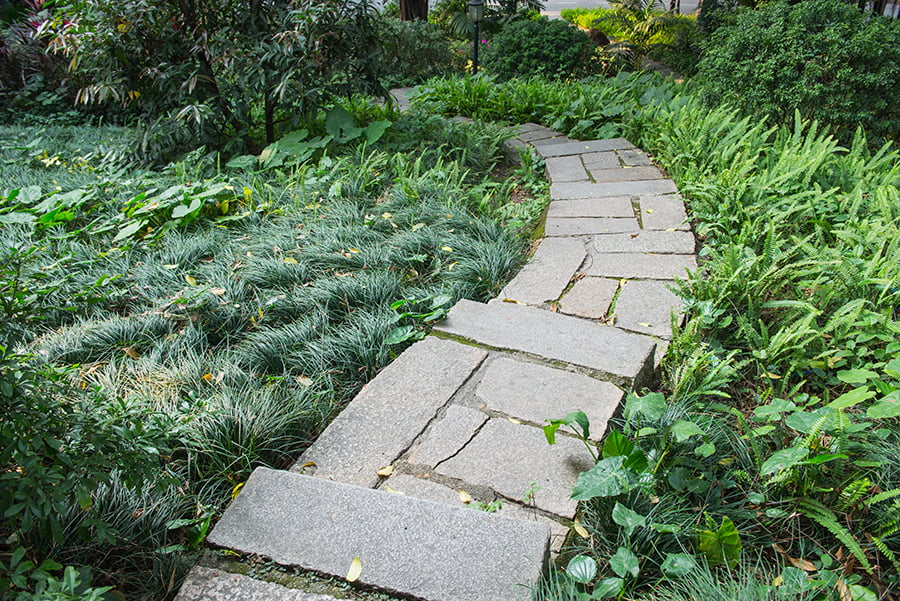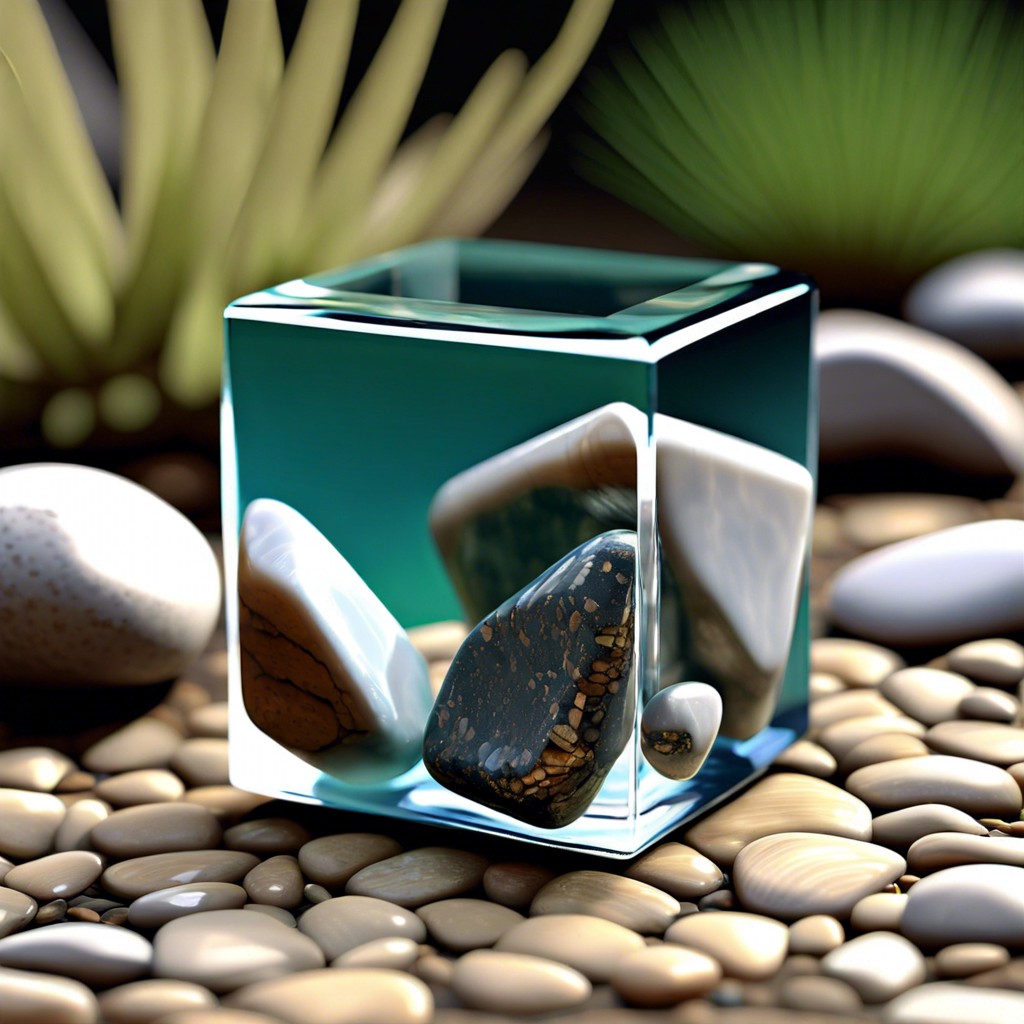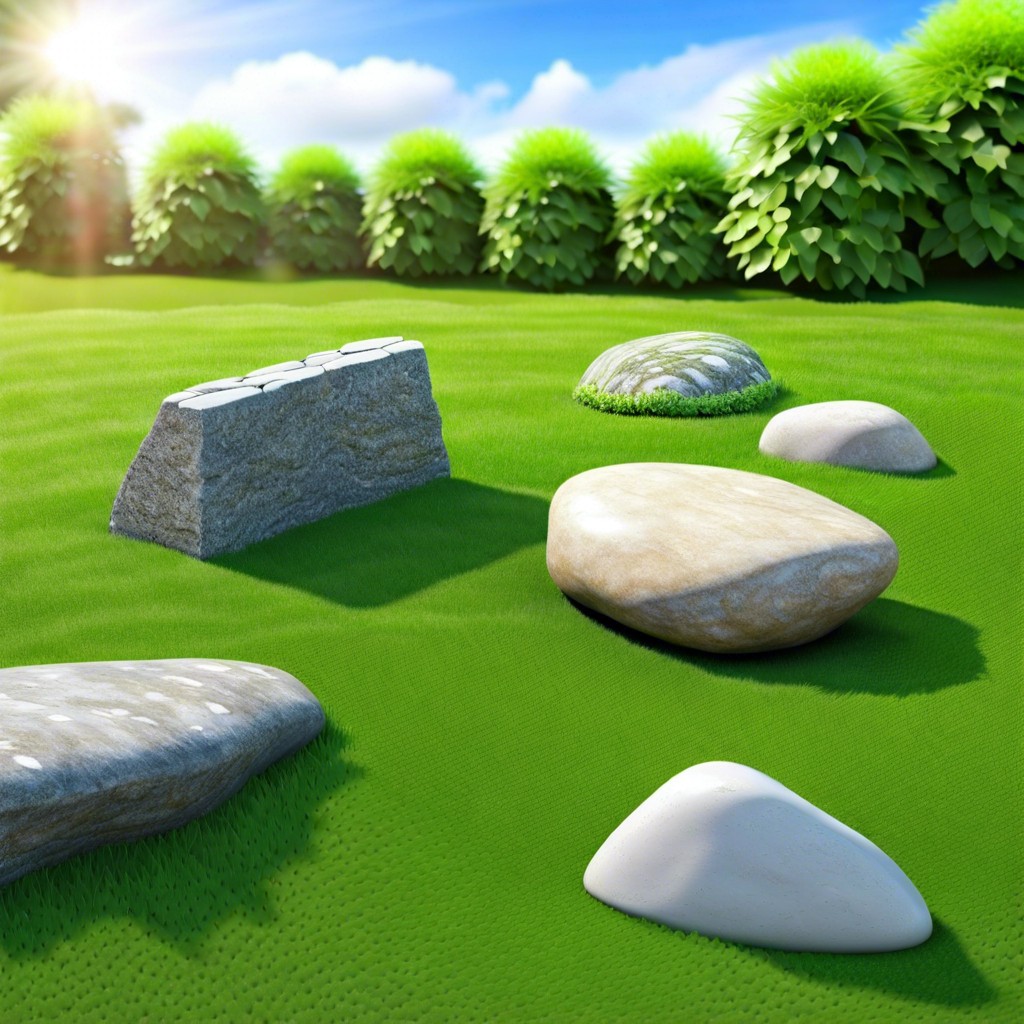In this article, we provide comprehensive insights into pavers, detailing their types, benefits, installation processes, and maintenance tips to equip you with all the necessary information for your landscaping projects.
Key takeaways:
- Concrete pavers provide versatility, durability, and easy maintenance.
- Brick pavers offer a classic look and long-term durability.
- Stone pavers provide natural elegance, durability, and minimal maintenance.
- Pavers are highly customizable and can withstand heavy foot traffic.
- Pavers require minimal maintenance and allow for easy repairs.
Types of Pavers

Concrete pavers offer a balance of affordability and variety, available in numerous shapes, sizes, and colors. They’re manufactured to mimic the look of natural stone or brick, with the added benefit of customization to fit any design vision.
Brick pavers, made from clay, boast a classic appeal that enhances the charm of traditional or historic homes. Their color, generally in the spectrum of reds, browns, and earth tones, remains steadfast over time, resisting fading from sunlight exposure.
Stone pavers, such as those made from granite, slate, limestone, or travertine, are the epitome of natural elegance. Their unique textures and colors, formed over millennia, ensure that no two pieces are exactly alike, making them perfect for a distinctive and upscale hardscaping feature.
Each type of paver has its own set of characteristics and optimal use scenarios, influencing the selection process based on durability needs, budget, and the overall aesthetic desired for the hardscape project.
Concrete Pavers
Concrete pavers are one of the most versatile options available for surfacing outdoor spaces. They come in a myriad of shapes, sizes, and colors, allowing homeowners and designers to create unique and personalized patterns. These pavers are manufactured in a controlled environment, ensuring consistent quality and uniformity that’s hard to achieve with natural stone.
One of the big draws to using concrete for your paving needs is its incredible durability. Unlike asphalt or poured concrete, individual pavers can move independently to accommodate ground movement, thus preventing cracks over time. This makes them a great choice for climates with freeze-thaw cycles.
Ease of maintenance is another key advantage; stains and wear are less noticeable due to the varied patterns and colors. And if a paver does become damaged, replacing it is as simple as lifting the affected piece and substituting a new one.
Installation is a process that, while doable as a DIY project, requires careful attention to detail. The base must be properly laid out and compacted to avoid settling or shifting. Sand is often used as a final layer on top of the compacted base to set the pavers in place, with the added benefit of being able to re-sand and re-level over time if necessary.
Concrete pavers, despite their strength, are relatively lightweight compared to stone, making them a practical choice for a variety of projects, from driveways to patios. Moreover, with the availability of permeable options, they can contribute to sustainable landscaping by allowing water to infiltrate the ground, reducing runoff and erosion.
Brick Pavers
Brick pavers are a timeless choice, offering a classic look that many homeowners desire for their outdoor spaces. Made from clay or concrete and dyed to look like brick, they are typically available in a variety of colors and can be laid out in numerous patterns, adding personality to patios, driveways, and walkways.
One of the biggest draws of brick pavers is their ability to withstand the test of time. They’re not only sturdy but can also handle significant temperature fluctuations without cracking, making them suitable for a range of climates. Their color retention is notable as well, able to maintain their vibrant hue without fading significantly due to sunlight exposure.
Ease of repair is another point in their favor. Should a brick become damaged or stained, it’s simple to replace just that piece rather than redoing an entire area. This modularity not only saves on future maintenance costs but also reduces waste, as only the affected bricks need to be addressed.
While bricks may sometimes cost a bit more upfront compared to other materials, the long-term benefits often outweigh this initial investment. They provide a balance of practicality and aesthetic appeal that can enhance the value and charm of any property.
Stone Pavers
Stone pavers are a natural choice for those looking to create an outdoor space that blends seamlessly with the natural landscape. Unlike their concrete and brick counterparts, stone pavers come in a variety of shapes, sizes, and colors that are all unique, since they’re quarried straight from the earth—no two pieces are exactly alike. This quality adds a level of sophistication and individuality to patios, walkways, or driveways.
The durability of stone is another significant advantage. Materials like bluestone, flagstone, and travertine are known for their strength and ability to withstand harsh weather conditions without cracking or fading over time. This resilience makes them a long-term investment for any property.
In terms of maintenance, stone pavers require minimal effort to keep them looking good as new. Regular sweeping to remove debris and occasional rinsing with water are generally sufficient to maintain their elegant appearance. However, in the case of spills or stains, a simple cleaning solution can be used to restore their natural beauty.
If you’re leaning towards an eco-friendly option, certain types of stone pavers offer permeable qualities. This means they allow for water to pass through and seep into the ground, reducing runoff and maintaining the natural water cycle.
Lastly, installing stone pavers can be a more complex process due to their irregular shapes and sizes. Creating a visually pleasing pattern often requires the skill of a professional who can ensure a level surface and proper fit, an important consideration to keep in mind when planning your project.
Benefits of Pavers
Pavers offer a blend of durability and aesthetic appeal for your outdoor spaces. Since they come in a variety of shapes, colors, and textures, they are highly customizable to fit your design vision. You can create intricate patterns or simple, uniform layouts depending on your personal style.
Moreover, they are remarkably tough and can withstand heavy foot traffic and harsh weather conditions without showing significant wear and tear. This makes them an ideal choice for patios, driveways, and walkways where durability is as important as appearance.
In terms of maintenance, pavers score high marks for their ease of care. Unlike other materials that require frequent treatments or are prone to cracking, pavers simply need occasional rinsing and weeding to keep them looking fresh. In the event of damage or staining, individual pavers can be replaced without disturbing the entire surface, making repairs a breeze.
By choosing pavers, you’re opting for a long-lasting, easy-to-maintain, and beautiful surface that can significantly enhance your outdoor living space.




